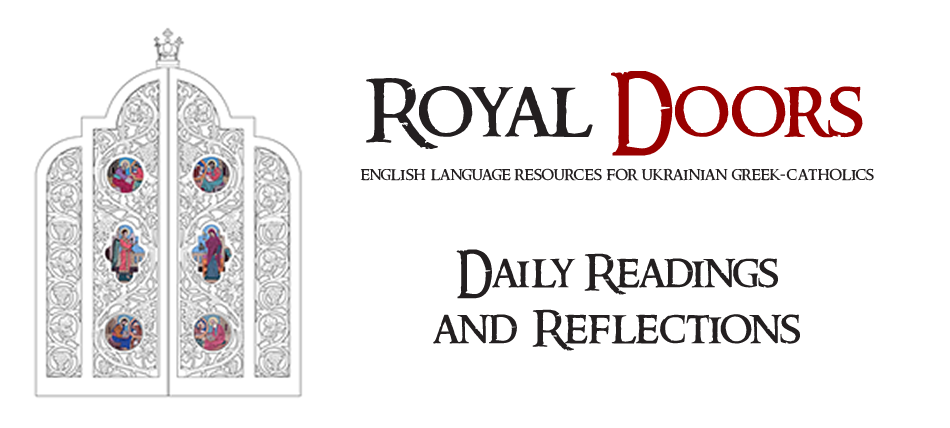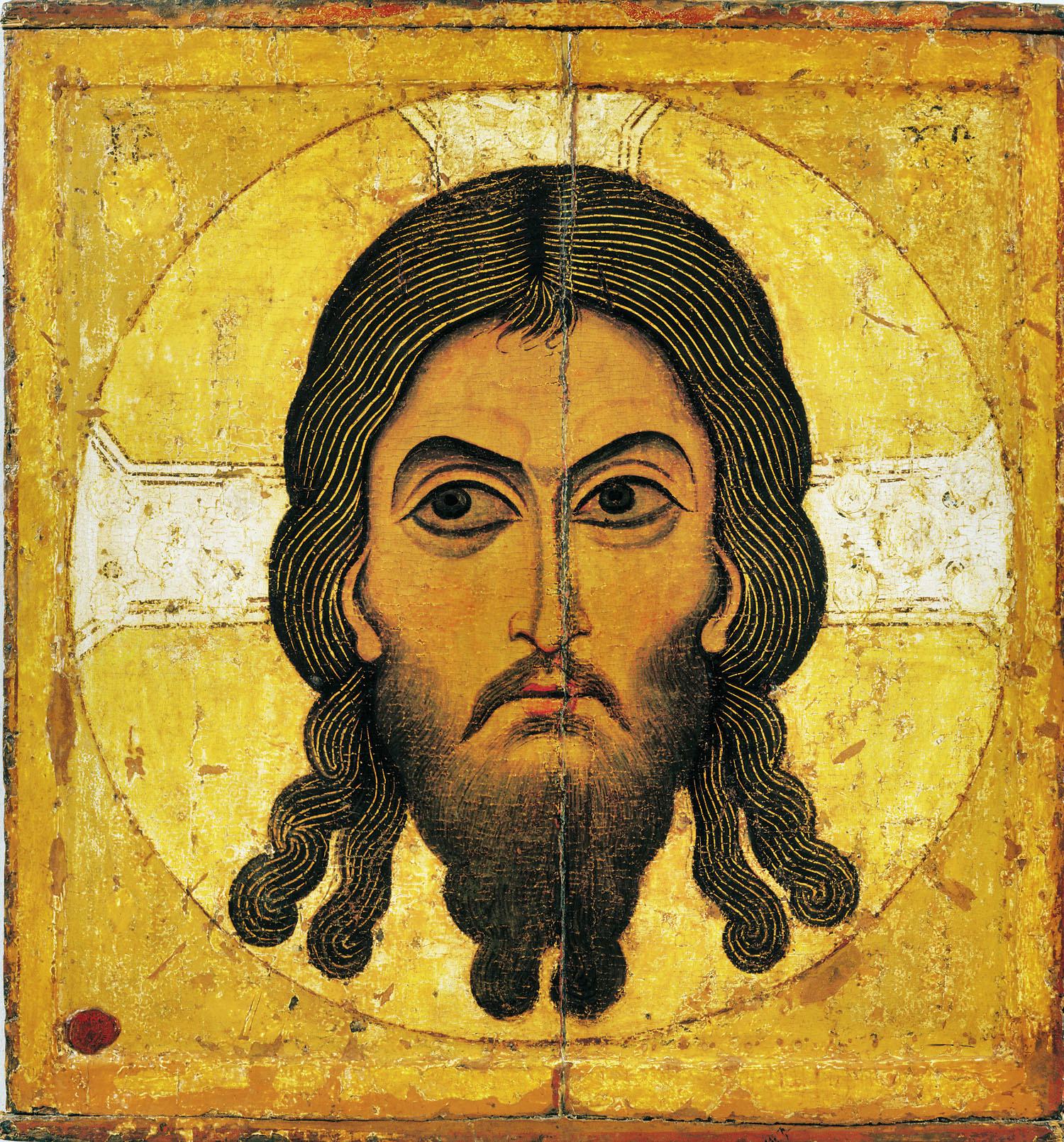FROM TIME TO TIME Eastern Christians are reproached for venerating icons because “icons are not in the Bible.” St John of Damascus, whose treatises on icons were instrumental in defeating iconoclasm, taught that the Church’s icons are “in the Bible” because they stand in the context of God’s own self-revelation to us through images. We make icons because God has made icons.
The Perfect Icon of the Father
God the Father Himself is unknowable, beyond our understanding, according to the Torah. To represent Him in physical form would be idolatry. For the Jews even to speak His name would be unseemly. There is, however, an icon of the Father. As St John of Damascus wrote in his Third Treatise on the Holy Icons, “The first natural and undeviating icon of the invisible God is the Son of the Father, showing the Father in Himself” (Treatise III, 18).
It is the Lord Jesus Himself who indicates this relationship to God in the following discussion with His disciples. Jesus said to Thomas, ‘“I am the way, the truth, and the life. No one comes to the Father except through Me. If you had known Me, you would have known My Father also; and from now on you know Him and have seen Him.”
A confused Philip interjected, “‘Lord, show us the Father, and it is sufficient for us.’ Jesus said to him, ‘Have I been with you so long, and yet you have not known Me, Philip? He who has seen Me has seen the Father; so how can you say, ‘Show us the Father’? Do you not believe that I am in the Father, and the Father in Me?’” (John 14:6-10).
The Son is the perfect icon of God because the Father is fully present in Him. Jesus would repeat this teaching as His passion drew nearer, knowing that His death and resurrection would validate His claim: “He who sees Me sees Him who sent Me” (John 12:45). This conviction would become central to the Church’s belief, expressed so strongly in the prologue to St John’s Gospel, “No one has seen God at any time. The only begotten Son, the One who is in the bosom of the Father, He has made Him known” (John 1:18).
We find the same teaching in St Paul’s writings, expressed specifically in iconographic terms. Thus the Epistle to the Hebrews proclaims Christ to be “the brightness of His glory and the express image [eikon] of His person, upholding all things by the word of His power” (Hebrews 1:3). Here and in the Epistle to the Colossians Christ is described as Revealer of the Father, as His icon to the world. “He is the image [eikon] of the invisible God, the firstborn over all creation. For by Him all things were created that are in heaven and that are on earth, visible and invisible, whether thrones or dominions or principalities or powers. All things were created through Him and for Him. And He is before all things, and in Him all things exist. And He is the head of the body, the church, who is the beginning, the firstborn from the dead, that in all things He may have the preeminence” (Colossians 1:15-18).
As icon of the Father, Christ touches all things with His dynamic presence, creating and maintaining all things by His life.
Man the Divine Icon
According to the Book of Genesis, mankind itself is an icon of God, who is Himself the “iconographer.” “Then God said, ‘Let Us make man in Our image, according to Our likeness; let them have dominion over the fish of the sea, over the birds of the air, and over the cattle, over all the earth and over every creeping thing that creeps on the earth.’ So God created man in His own image; in the image of God He created him; male and female He created them” (Genesis 1:26-27). In his ability to order creation (and in so many other ways as well) man images the Creator, who is Himself the image of the Father.
The Church Fathers saw a significant difference between the Son as the perfect icon of the Father and mankind as the scarred and broken image of the Creator. To explain man’s fallen condition many Fathers made a distinction between the two terms used in Genesis. They saw the image of God in man to be permanent if scarred but the likeness to have been lost. It would only be in the incarnation of Jesus that man would once more become both image and likeness of God.
While the Son of God is the perfect image or icon of the Father, every human being is in some imperfect way God’s image. A believer convinced of this teaching reveres every human being as an icon of God.
The Temple, Icon of Paradise
The Scriptures also contain examples of material images which are described as made according to a spiritual model. The tabernacle or portable sanctuary in the desert was constructed by Moses in accordance with “the pattern of the tabernacle, and of all its furniture” (Exodus 25:40) revealed to him by God. In the New Testament the temple of Jerusalem and its furnishings, which had become Israel’s permanent sanctuary, are described as “copies of the heavenly things” (Hebrews 9:23), images of a reality in the heavens. But which spiritual realities does the temple represent?
Many Scripture commentators find the key in this verse from Psalm 78: “He built his sanctuary like the high heavens, like the earth, which he has founded forever” (Psalms 78:69). The temple, they believe, was designed as an icon of creation. According to this view, the results of each day of Creation (cf., Genesis 1) are symbolically reflected in the temple and its furnishings. As described above, the light of day one of Creation can be interpreted as the glory of God and those who dwelled with Him. The temple veil would then symbolize the “firmament” as the primary division between heaven and earth. The bread of presence represents the grass and herbs of the earth, the lampstand represents the sun, moon and stars, the cherubim represent the birds, and the high priest represents mankind at worship, Adam the priest of creation. The temple is thus understood by many Jews as well as Christians as an icon of the universe.
God’s creation was no longer recognizable as His temple; an icon – the tabernacle and the temple – was needed to represent it.
Icons of an Icon
In the Epistle to the Hebrews the mystery of our salvation is described in terms of the Yom Kippur liturgy of the Jewish temple: “For Christ has entered, not into a sanctuary made with hands, a copy of the true one, but into heaven itself, now to appear in the presence of God on our behalf. Nor was it to offer himself repeatedly, as the high priest enters the Holy Place yearly with blood not his own; for then he would have had to suffer repeatedly since the foundation of the world. But as it is, he has appeared once for all at the end of the age to put away sin by the sacrifice of himself. And just as it is appointed for men to die once, and after that comes judgment, so Christ, having been offered once to bear the sins of many, will appear a second time, not to deal with sin but to save those who are eagerly waiting for him” (Hebrews 9:24-28).
The living icon of Christ’s sacrifice is, of course, the Divine Liturgy, in which the holy gifts are brought into the holy of holies “beyond the veil.” As the Jewish temple was an icon of the worshipping world, our oblation is an icon of the sacrifice of Christ – an icon of the eternal reality! Glory to God for all things.
Source: Eparchy of Newton

